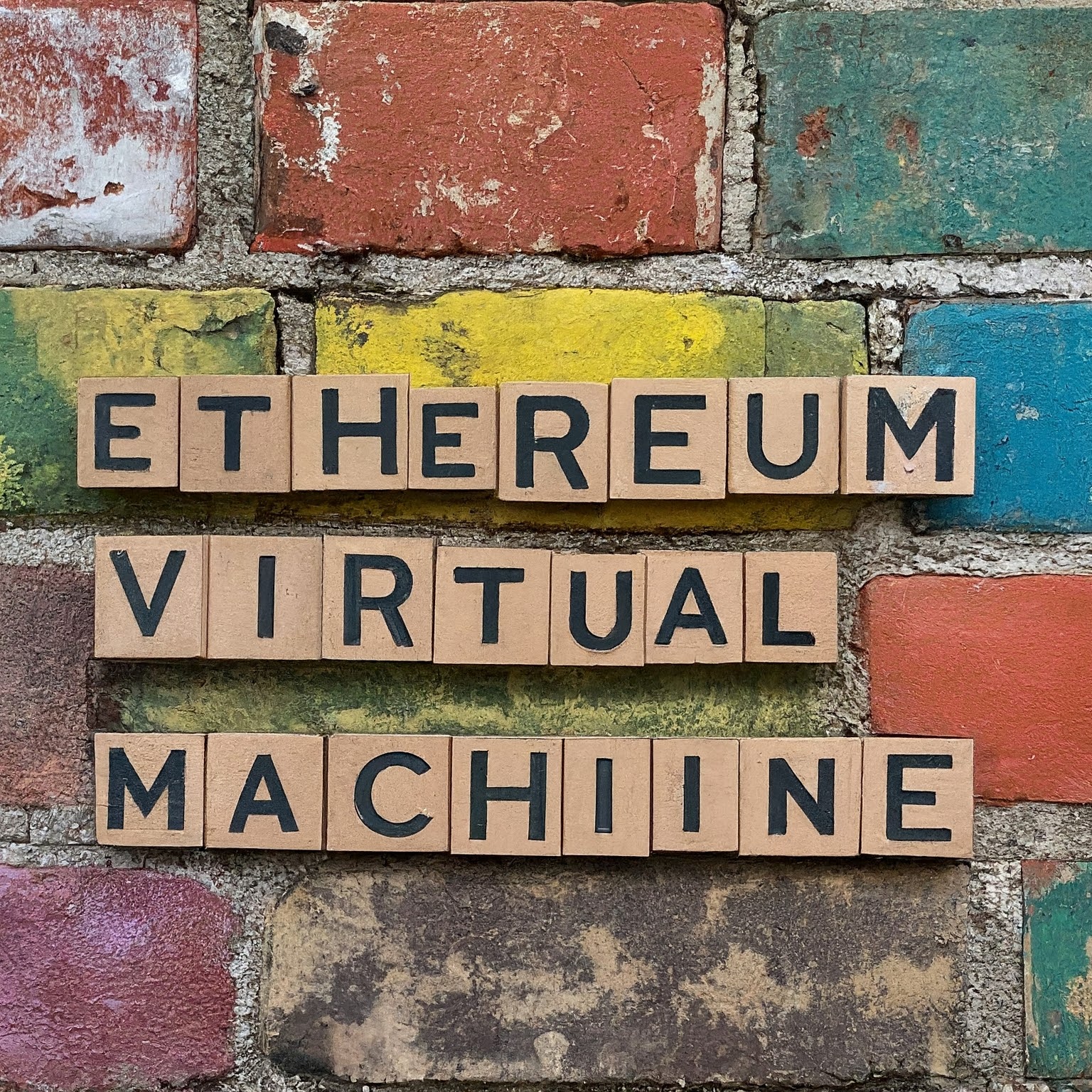Enter the realm of blockchain and you’ll soon encounter the Ethereum platform — an ecosystem that has revolutionized the possibilities of blockchain technology. At the heart of Ethereum lies the Ethereum Virtual Machine (EVM), a game-changer that has enabled the creation of varied decentralized applications and smart contracts. For those venturing into this landscape, understanding the EVM and its implications is crucial.
In this comprehensive post, we’ll decode the Ethereum Virtual Machine, exploring its inner workings, the significance of smart contracts, the advantages it offers to blockchain technology, and the challenges that emerge with its implementation. Whether you’re an experienced blockchain developer or a curious individual seeking to expand your technological horizons, this guide will provide you with a deeper understanding of EVM and its role in shaping the future of blockchain.
What is Ethereum Virtual Machine in Blockchain?
The Ethereum Virtual Machine (EVM) is the engine that powers the Ethereum blockchain, allowing it to execute complex smart contracts and decentralized applications (dApps). Fundamentally, the EVM can be thought of as a global, decentralized computer comprising a network of nodes, each of which executes transactions and smart contracts. This is made possible through a unique feature of the Ethereum blockchain – its ability to run Turing-complete code, meaning that theoretically, it can solve any problem given enough resources. This capability has led to the creation of a wide array of applications, from decentralized finance (DeFi) platforms to non-fungible token (NFT) marketplaces, all built on the Ethereum network.
The operation of the EVM is based on an abstract, simple, yet powerful computational architecture that executes code in a secure and isolated environment. This isolation ensures that code execution on the EVM does not affect the host machine or the main Ethereum network, thereby maintaining security and integrity. Each operation carried out within the EVM is done so with a cost, measured in “gas,” which is paid by the user in Ether (ETH), Ethereum’s native cryptocurrency. This gas fee mechanism not only compensates the network participants for their computational efforts but also helps to prevent spam or malicious activity on the network by making such attacks prohibitively expensive.
Understanding the EVM is crucial for developers looking to build on Ethereum, as it directly affects how they write and deploy smart contracts. However, the implications of the EVM extend far beyond the technical domain; its existence has opened up new avenues for decentralization, enabling a shift towards a more open and accessible digital economy.
How EVM Works?
EVM can be viewed as the computing environment within the Ethereum network, capable of executing smart contracts. It’s a stack-based execution environment that runs on Ethereum nodes which are computers participating in Ethereum’s distributed network.
When a transaction is broadcasted to the Ethereum network, the EVM springs into action. It reads the smart contract bytecode, a low-level representation of the smart contract, and starts executing instructions through an iterative process. This involves pushing numbers onto the stack, popping numbers off the stack and performing operations, and modifying the contract’s storage space.
In Ethereum, gas is a unit that measures the amount of computational effort required to execute operations within EVM. Each operation has an associated gas cost and the transaction’s sender must pay for the computation fees using ether, the cryptocurrency native to the Ethereum platform. This mechanism ensures that network resources are used efficiently and that malicious actors cannot paralyze the network with unreasonably complex activities.
To understand EVM is to grasp its fundamental ability to provide a deterministic execution environment irrespective of the operating system and language used to code the smart contract. This could mean that a smart contract could be written in a high-level language like Solidity, published to the Ethereum blockchain, and subsequently executed in the same manner on any machine running EVM, guaranteeing consistency and security across all nodes.
EVM Smart Contracts
Smart contracts are self-executing contracts with the terms directly written into code. They automatically enforce and facilitate the performance of credible transactions without the need for intermediaries. EVM is the powerhouse that enables these smart contracts to be deployed and executed.
The concept is simple yet revolutionary. Smart contracts can be used for a wide range of applications, from managing agreements in a transparent and conflict-free way to facilitating automated processes in domains like finance, real estate, and supply chain management. Because smart contracts run on blockchain technology, they also inherit the innate characteristics of a distributed ledger, including immutability and a high degree of security.
Developers write smart contracts in high-level programming languages such as Solidity, Vyper, or LLL (Low-Level Lisp-like Language). These languages are then compiled into EVM bytecode, which is subsequently broadcast on the Ethereum network to be executed. The seamless integration between smart contracts and Ethereum blockchain, through EVM, provides a fertile ground for innovation, with countless potential use-cases and burgeoning ecosystems.
Benefits of EVM in Blockchain Technology
The Ethereum Virtual Machine offers several critical advantages that have cemented its central role in the blockchain landscape.
Standardization and Interoperability
The EVM provides a standardized and interoperable platform for executing smart contracts. The uniformity brought by EVM means that any smart contract deployed will be compatible with other smart contracts, facilitating the creation of complex DApps (decentralized applications) with multiple smart contracts interacting seamlessly with one another.
Decentralization and Trustlessness
EVM runs on a decentralized network, meaning that the smart contracts it executes are tamper-proof and require no trusted third-party intermediaries. This trustless environment is a hallmark of the blockchain technology, ensuring that the outcomes and agreements encoded within smart contracts are transparent, credible, and provable.
Immutability and Transparency
Ethereum’s implementation of EVM ensures immutability and transparency. Once a smart contract is deployed to the Ethereum blockchain and executed on the EVM, its state changes are recorded on the blockchain and can be viewed by any network participant. This feature is crucial for applications that necessitate a clear, unchangeable record, such as in governance or voting systems.
Challenges and Limitations of EVM in Blockchain
No technology is without its struggles, and the Ethereum Virtual Machine is no exception. EVM’s main challenges and limitations stem from its design and the inherent complexities of executing smart contracts within a decentralized environment.
Scalability
One of the most pressing issues faced by EVM is scalability. The current design of EVM, which requires all nodes to process and execute each smart contract, poses a significant bottleneck as the network’s usage grows. This can lead to congestion and increased transaction fees — issues that the Ethereum community is actively working on resolving through various means, including the upcoming Ethereum 2.0 upgrade.
Security Concerns
While EVM’s deterministic nature does offer a high degree of security, the ecosystem surrounding it is complex. There have been high-profile incidents of smart contracts containing vulnerabilities that were exploited, leading to significant losses. Developers require a robust understanding of the underlying principles and best practices to write secure smart contracts — a challenge in an industry that is rapidly evolving and attracting a growing number of participants.
High Learning Curve
Entry into the world of EVM and smart contracts development often requires a steep learning curve. Developers must not only understand blockchain concepts and principles but also be proficient in the specific languages and toolsets used within the Ethereum ecosystem. This can be a barrier to wider adoption and may limit the pool of available talent working within the space.
Despite these challenges, the potential of EVM is vast. The platform’s advantages in providing a standardized, interoperable, and decentralized environment for executing smart contracts are clear. The Ethereum community continues to innovate, and EVM remains at the heart of its endeavors, propelling the platform forward in its quest to reshape industries and reimagine the nature of transactions and agreements in a digital age.
In conclusion, the Ethereum Virtual Machine is more than just a component of the Ethereum network; it is the catalyst for a new paradigm of decentralized, immutable, and transparent computing. Its impact on blockchain technology cannot be overstated, and as the technology continues to mature, EVM will likely serve as the blueprint and benchmark for future developments in smart contract execution environments.












Leave a Reply
You must be logged in to post a comment.